Your Complete Guide to Choosing Curtain Colors: Simple Pairing, Contrast, and Trend Ideas
Choosing the perfect curtain colors can shape the entire mood and feel of your room. The right hue doesn’t just complement your walls, it defines your space, connects textures, and influences warmth. It can showcase the varying colors and accent pieces you spent precious time curating in a room that feels uniquely you. However, ignoring how fabric texture or natural light interacts with color could lead to a space that falls flat. After reading our guide, you’ll be an expert in pairing curtain color confidently for balance, comfort, and visual harmony in your home.
The Golden Rules of Curtain Color
Every great curtain color choice begins by asking yourself what statement you want your space to make. Whether your goal is subtle harmony or a bold contrasts, your color strategy depends on your design choices; by blending, contrasting, or accenting, it guides your entire room.
Blending to Maximize Height and Space
To make any room feel taller and grander, match your curtains closely to the dominant wall color to create a continuous vertical line. For example, Zen Linen drapes in a near-identical wall shade instantly extend height and openness.

Using Contrast to Create a Focal Point
To draw the eye and frame the window, apply the contrast rule by selecting a color from the opposite side of the color wheel. For example, dark gray walls paired with the lightness of Alma Linen Natural Texture Drapes can create a striking balance.

Integrating Color from a Supporting Element
The “Accent Trick” ties your room together by pulling a secondary color from a rug, pillow, or artwork, and using that shade for your curtains, such as matching a throw pillow's rich, deep color to any number of colors in our Zen Linen palette.




Various Color Sample Swatches
The Psychology of Color: Mood and Function
The color you select should match your room’s function and emotional tone. Cool shades like blue or green bring calm to bedrooms and home offices. Warm neutrals like ivory, tan, or beige make living spaces feel relaxed and inviting. For rooms meant to energize or impress, such as dining areas, bold colors like red or deep gold can add depth and drama.
The Ultimate Wall Color Cheat Sheet
The color of your walls is the single most important variable in curtain selection. Try using the following guidelines to create a well-balanced and complementary pairing when choosing curtain colors.
What Color Curtains Work with Gray Walls?
· Determine your Gray’s Temperature: Hold one of our free fabric swatches next to your wall under natural light. If the wall feels cold, select a warm, ivory, or pale taupe curtain to introduce needed warmth.

Motti Texture Pinch Pleated Curtains
· The Charcoal Rule: Deep charcoal acts as a flexible neutral color, pairing easily with colors like muted rose, sage, or even a deep emerald without clashing.
Curtains for White, Beige, and Greige Walls
White, beige, and greige walls offer endless potential, but your room can feel flat without texture and layered tones to add warmth and interest.
· Embrace Textural Variation. For beige or greige, choose tactile materials to create visual richness.


· Avoid Yellow Undertones. Lighter beige fabrics tend to pick up yellow hues under evening light. Try to pick linen or cotton blend curtains with subtle gray tones for a more modern aesthetic.
· Match the Trim, Not the Wall: When working with white walls, match your curtain color to the window trim, creating a cleaner, more intentional border around the window.
· Layer Sheer and Solid: To soften the daylight while maintaining privacy at night, pair a sheer inner layer like June Sheer with a lined drape, like the Sloan Jacquard Pinch Pleated.
Design Advice for Dark or Bold Walls
Dark paint requires a dramatic decision: blend for intimacy or contrast for drama? Matching dark tones can feel cozy and enveloped, while lighter curtains will break up the color and brighten your space. It’s completely up to you the statement you want your room to make!
The Expert Edge: Color Influences You Can't Ignore
Professional-looking spaces come from noticing how light and angles change your curtain color throughout the day, so take a moment to view your room from every spot before deciding.
The Directional Light Test: Handling Different Sun Exposures
· North-Facing Rooms: These windows receive cooler light that can tend to dull color. Warm tones or textured fabrics can help maintain balance.

· South-Facing Rooms: Bright light can wash out pale shades. Try choosing saturated or textured fabrics to retain color intensity in strong daylight.

Elise Knitted Garment Curtains
Texture and Sheen: How Fabric Type Alters Perceived Color
· Matte Fabrics: Natural fibers like linen or cotton can absorb light, giving color a grounded depth.

Aria Cotton Textured Check Pattern
· High-Sheen Fabrics: Velvets or jacquards can actually reflect light and reduce movement, adding a luxurious note to formal room
Style Tip: The way light interacts with different textures can alter its perceived color, so try some of our free sample swatches before making your choice!
Curtains for Open-Concept Spaces
In open layouts, continuity is key. Keep curtain colors consistent throughout adjoining rooms to preserve the flow. Try to define zones with texture, not color, and maintain a single, neutral color like a creamy white or light gray for all window treatments. Use varying textures that won’t disrupt the flow, like a soft linen or a neutral textured check pattern to casually break up zones.
Trend Spotlight: Matching Recent Pantone Colors
Interior designers rely on Pantone for up-to-date color trends. Since drapes are a long-term investment, they should complement trending colors introduced with smaller details. If you’re drawn to a warm tone like 2025’s Mocha Mousse, use a coordinating neutral such as Neutral Linen Curtains in Milk Tea. For bolder accents like 2023’s Viva Magenta, pair them with soft, grounding neutrals; Zen Linen in Rock Grey balances vibrancy with calm sophistication.
Real Reader Questions Answered
Q: What color curtains should I get if my walls are two different shades?
A: Choose a tone that bridges both, a beige with texture like Hazel Linen adds balance and cohesion.
Q: Do my curtains need to match my carpet or rug?
A: Not exactly. They should coordinate, not duplicate, to echo a color that already appears in your rug’s design.
Q: What’s the most requested curtain color for resale value?
A: Neutral shades such as white, ivory, and soft gray. They appeal universally and make your spaces feel larger.
Q: How do I make my curtains look more expensive?
A: Prioritize quality fabrics, generous fullness, and mount rods high to visually elongate your windows.
Style Recap & Final Takeaway
Choosing your curtain color is like visual storytelling; the right pairing enhances your home’s character and function.
· Start with Purpose: Decide whether you’re blending, contrasting, or accenting.
· Respect the Light: Test fabrics under natural daylight before finalizing.
· Prioritize Quality: Texture, weave, and lining impact both color and performance.
· Stay Current: Use seasonal tones for subtle inspiration.
· Perfect the Fit: Proper sizing and fullness complete the professional finish.
Ready to select drapes with your newfound expertise? Explore our collections and feel the difference that true quality makes.
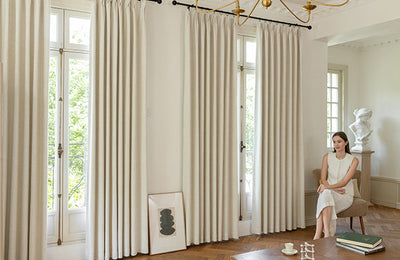
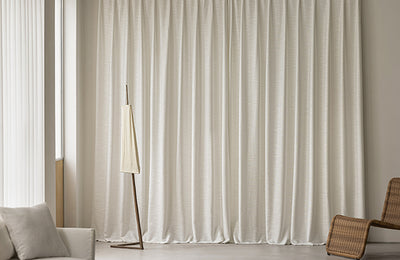
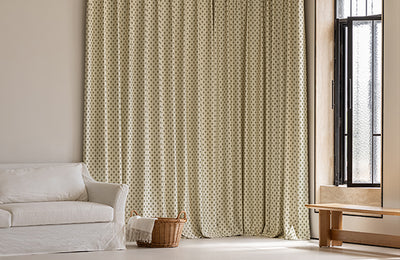
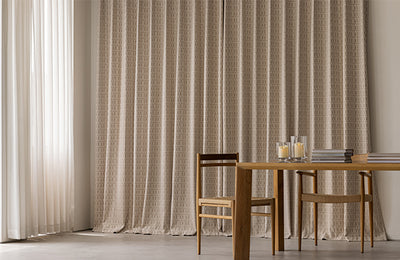
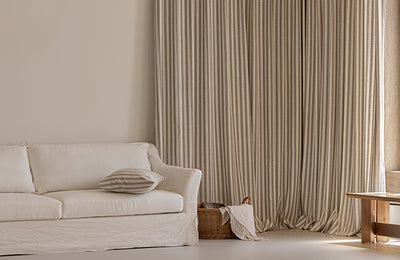
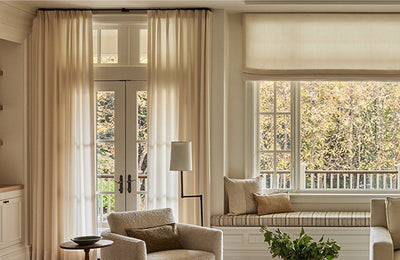
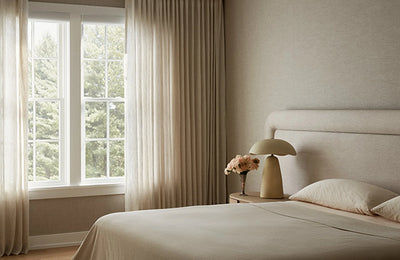
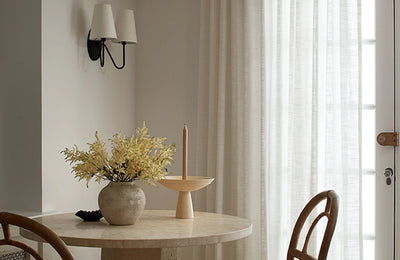
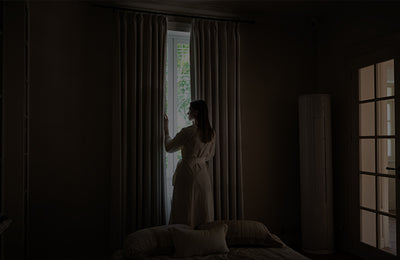
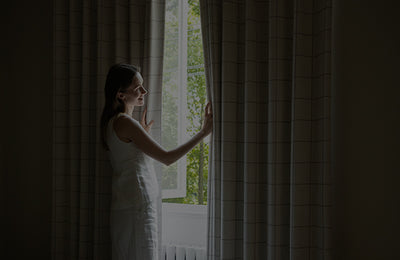
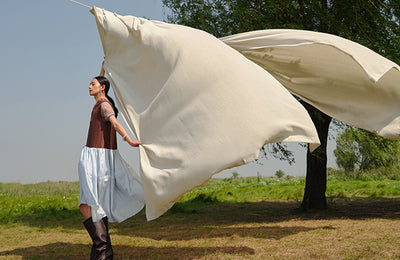
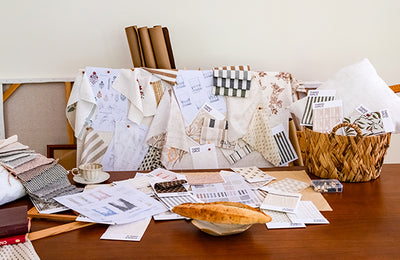

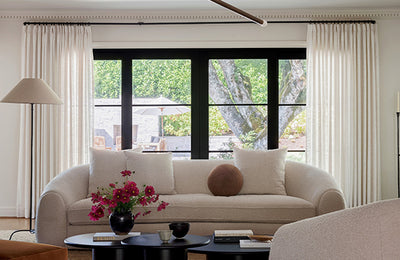
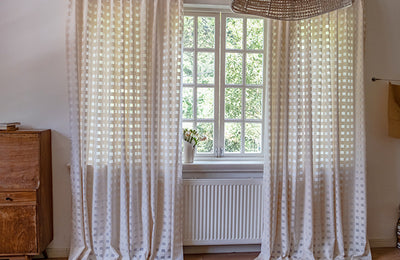
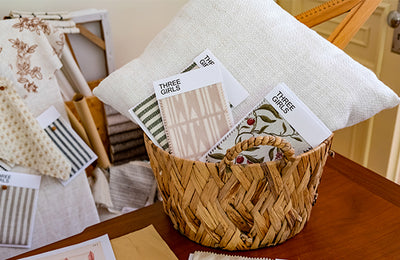
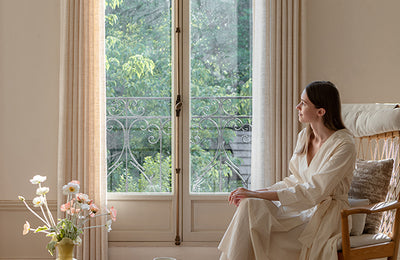
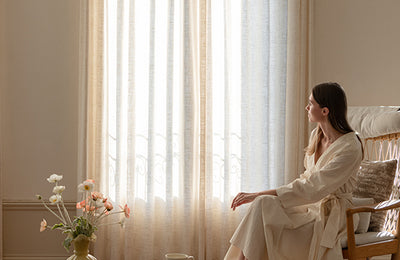
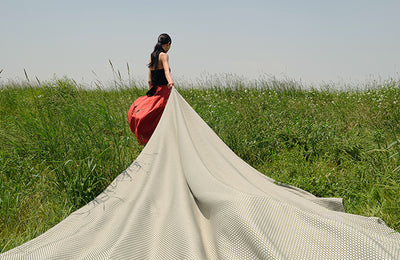
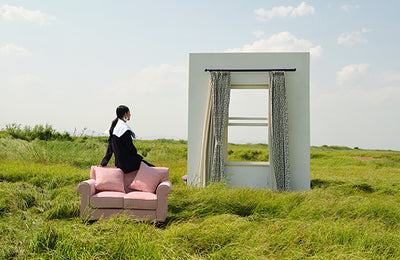
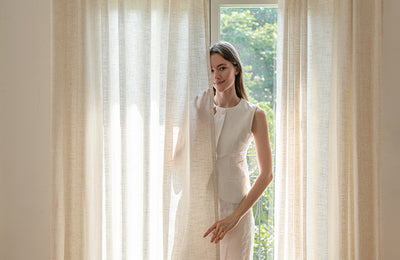
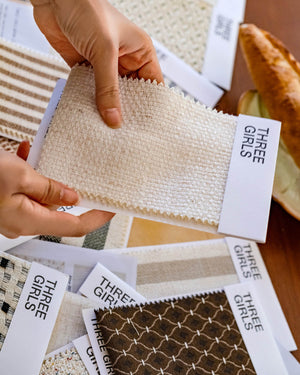
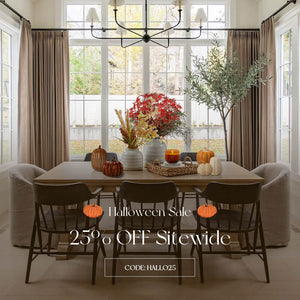
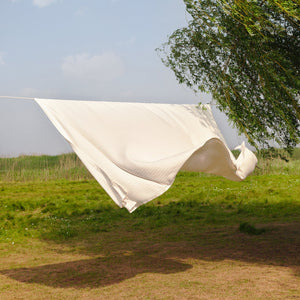
Leave a comment
All comments are moderated before being published.